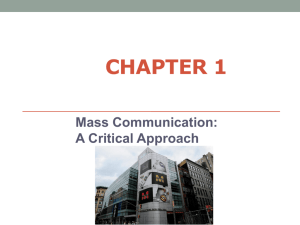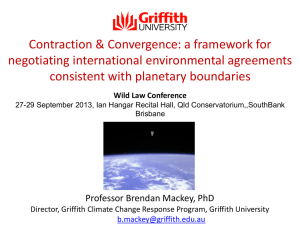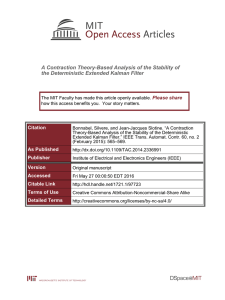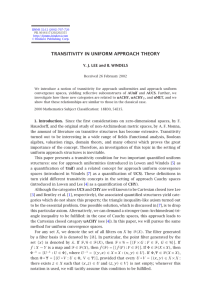Peak oil and climate change - Queen's University Belfast
advertisement
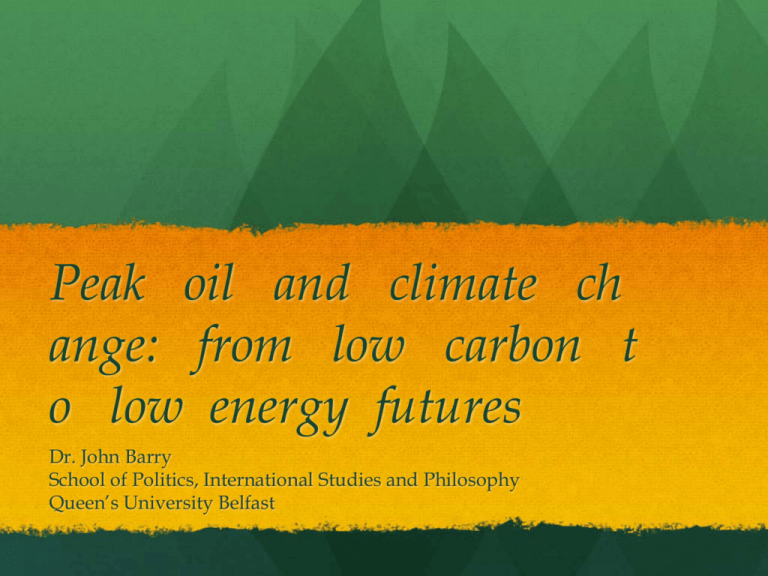
Peak oil and climate ch ange: from low carbon t o low energy futures Dr. John Barry School of Politics, International Studies and Philosophy Queen’s University Belfast ‘Planetary Boundaries: Exploring the safe operating space for humanity in the Anthropocene’ (Nature, 461 : 472 – 475, Sept 24 - 2009) Climate Change Ozone depletion Atmospheric Aerosol Loading Biogeochemical loading: Global N & P Cycles Planetary Boundaries Rate of Biodiversity Loss Ocean acidification Global Freshwater Use Land System Change Chemical Pollution Background The Age of Oil 2012 1930 1970 2000 2050 Our Great Grand Parents 7 Generations Span The Age of Oil Our Grand Parents Our Parents Our Generation 20 Our Children 80 Our Grand Children Our Great Grand Children 1930 1970 2000 2050 2100 Oil addiction.... Peak oil and energy Insecurity We need to decrease our dependence on oil, coal and gas Not just electricity, but heating, transport and our food system is dependent upon a non-renewable, climate-change causing energy source. “We need to leave oil before oil leaves us”, Fatih Biriol, International Energy Association Humanity’s Top Ten Problems for next 50 years 1. Energy 2. Water 3. Food 4. Environment 5. Poverty 6. Terrorism & War 7. Disease 8. Education 9. Democracy 10. Population 2012: 7 Billion people 2050: 9-10 Billion people Three Great Challenges of the 21st Century Energy, Climate, Food The Perfect Storm It’s time to change direction SS Global Economy From low carbon to low energy future Low carbon and decarbonisation transition – everywhere Low energy transition – developed/over developed minority world Part of ‘contraction and convergence’ equitable strategy to combat climate change globally Reduction in carbon emissions by minority world (contraction) to allow majority world to increase within global threshold to eventual convergence over time (convergence) Contraction and Convergence: Precaution and Equity Contraction: On the basis of precaution and guided by scientific advice of IPCC, all governments or regional groupings of governments jointly and severally agree to observe an atmospheric target. With this it is possible to calculate the total diminishing amount of greenhouse gases that the world can emit for each year in the coming century. Whatever the rate chosen, this event as a whole as “Contraction”. Convergence: On the basis of equity, convergence means that each year’s ration of this global emissions budget can be shared so that each country or group of countries progressively converges on the same allocation per inhabitant by an agreed date, for example by 2050. This recognises the principle of globally equal rights per capita to the ‘global commons’ of the atmosphere, but achieved by smooth transition. Onus on minority world (‘broadest shoulders’ and cause Contraction and Convergence Contraction: Definition of global emission path (e.g. 450ppmv) Convergence: Per capita emissions of all countries converge by 2050 Emissions per capita (tCO2eq./person) 30 Annex I 25 Global total Non-Annex I 20 15 10 5 0 1990 2000 2010 2020 2030 2040 2050 2060 2070 2080 2090 2100 Difficulty of replacing oil with renewables A fully renewable energy society – a society with less energy ‘Low carbon’ – way of including nuclear power What does a a fully renewable energy society and economy look like? Cubic Mile of Oil/Year Political Implications: the downsides of oil addiction E Responses to peak oil Fredrichs (2009) – historical study of responses to peak oil 1. Predatory nationalism – pre WWII Japan 2. Community resilience – post-Soviet collapse Cuba 3. Authoritarianism – North Korea and nuclear power Where do we see evidence of all three today? Need for major infrastructural planning for a transition from a carbon-based economy Decades long transition – promise of the ‘Green New Deal’ strategy (new economics foundation, 2008) Low energy future I Energy descent planning Implications of lower energy use across all major sectors – from housing, heating to food production Enhances energy security Focuses on demand side not supply side Very politically challenging – ‘planned retreat from fossil fuels’ at both global (Contraction and convergence) and national and regional levels Low energy future II Shifts objective of public policy to increasing human flourishing with less not more energy How do we decouple rising energy use from human flourishing and well-being? Low energy future for the minority world…thinking beyond conventional ‘economic growth’…but that’s another story….



